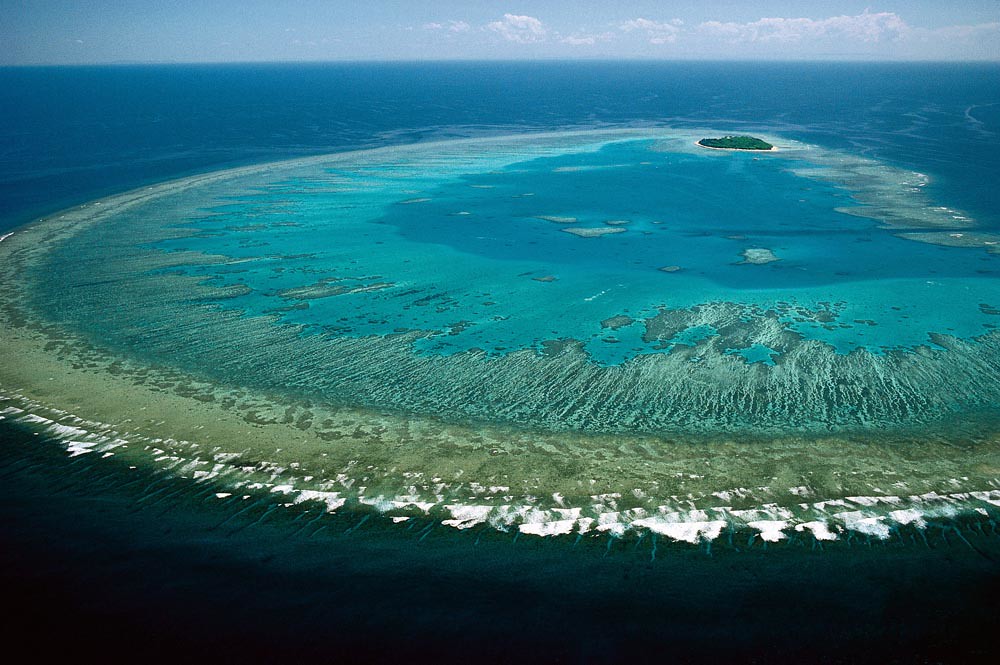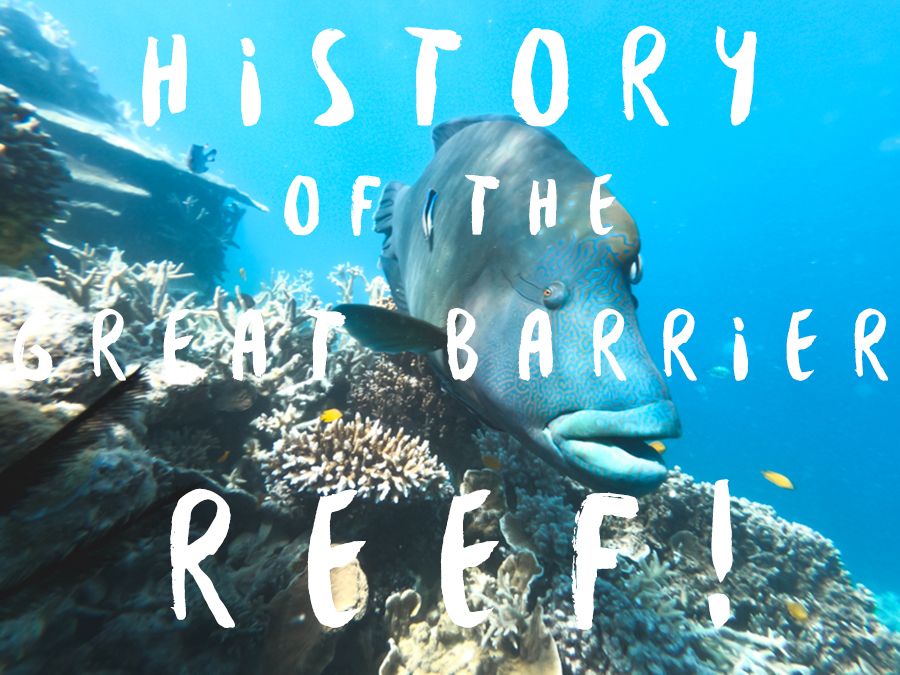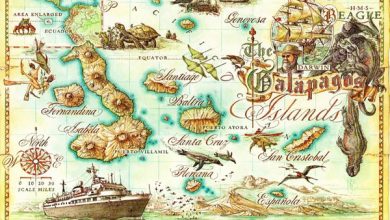Great Barrier Reef History.

The Great Barrier Reef formed around 500,000 years ago. It is the world’s largest coral reef system.
The Great Barrier Reef spans over 2,300 kilometers along Australia’s northeast coast. It consists of nearly 3,000 individual reefs and 900 islands. This magnificent natural wonder supports a diverse array of marine life. Coral polyps, tiny organisms, build the reef structure over centuries.
The reef is a UNESCO World Heritage site and a major tourist attraction. It also plays a crucial role in marine biodiversity. Human activities and climate change threaten its delicate ecosystem. Conservation efforts aim to protect and preserve this vital marine habitat for future generations.

Credit: schmidtocean.org
Ancient Origins
The Great Barrier Reef’s history is a tale of natural wonder. This stunning marine ecosystem has been millions of years in the making. Understanding its ancient origins gives us a glimpse into the Earth’s geological past.
Formation Process
The Great Barrier Reef began forming around 20 million years ago. It started as coral polyps settled on the ocean floor. These polyps form colonies, creating the reef structure.
Over time, layers of coral built up, developing into massive coral reefs. The process of formation involves the accumulation of calcium carbonate. This substance is secreted by the coral polyps, forming their skeletons.
Sea level changes also played a role. During ice ages, sea levels dropped, exposing parts of the reef. When the ice melted, sea levels rose, submerging the reefs again.
| Time Period | Event |
|---|---|
| 20 million years ago | Initial coral polyp settlement |
| Ice Ages | Sea levels drop, exposing reefs |
| Post-Ice Ages | Sea levels rise, submerging reefs |
Early Marine Life
The early marine life in the Great Barrier Reef was diverse. The reef provided habitat for countless species. Ancient fish, mollusks, and crustaceans thrived here.
Coral species evolved, adapting to the changing environment. Algae also played a key role. It provided essential nutrients for coral growth.
Marine reptiles and early mammals started appearing. They found the reef a perfect feeding and breeding ground.
- Ancient fish: Various species adapted to the reef environment.
- Mollusks and crustaceans: Flourished among the coral structures.
- Algae: Essential for coral growth, offering nutrients.
- Marine reptiles: Found the reef ideal for feeding.
- Early mammals: Used the reef for breeding grounds.
Indigenous Connection
The Great Barrier Reef holds immense cultural significance for Indigenous Australians. Their connection to this natural wonder spans thousands of years. This deep bond reflects their understanding and respect for the marine environment.
Cultural Significance
The Great Barrier Reef is more than just a natural wonder. It is a sacred site for many Indigenous communities. They believe the Reef is a living entity. The Reef is tied to their creation stories and ancestral heritage.
Indigenous Australians use the Reef to pass down knowledge and traditions. This practice ensures that each generation respects and protects the Reef. The Reef serves as a source of spiritual connection and identity.
Traditional Practices
Indigenous Australians have developed unique practices to live harmoniously with the Reef. These practices include sustainable fishing and reef management techniques.
| Practice | Description |
|---|---|
| Sustainable Fishing | Using methods that do not harm the ecosystem. |
| Reef Management | Monitoring and protecting coral and marine life. |
They use storytelling to teach younger generations about the Reef. This ensures that knowledge about biodiversity and conservation is preserved.
- Respecting marine life
- Using traditional tools
- Maintaining ecological balance
These practices demonstrate a deep respect for the natural world. They highlight the importance of preserving the Reef for future generations.
European Exploration
The Great Barrier Reef, a natural wonder, drew European explorers. These explorers documented their findings, shaping our understanding of the reef today. Their exploration marked a significant chapter in the reef’s history.
First Discoveries
In 1768, Captain James Cook set sail on the Endeavour. Cook’s mission was to observe the transit of Venus. He also aimed to explore uncharted lands.
On June 11, 1770, Cook’s ship struck the reef. This event marked the first European encounter with the Great Barrier Reef. Cook and his crew spent weeks repairing the ship.
Cook’s detailed logs and maps provided valuable information. These records helped future explorers navigate the treacherous waters.
Impact Of Settlement
European settlement began in Australia in 1788. The arrival of settlers impacted the Great Barrier Reef significantly.
The introduction of new species disrupted the reef’s ecosystem. Agricultural runoff and fishing practices also affected the reef’s health.
Settlers exploited the reef for resources. They harvested coral and sea life, leading to environmental changes.
Despite these impacts, the reef remained a subject of fascination. Explorers continued to study and document its wonders.

Credit: greatbarrierreef.org
Modern Conservation
The Great Barrier Reef is a natural wonder of the world. Modern conservation efforts aim to protect it. These efforts address many challenges and involve many activities.
Environmental Challenges
The reef faces many environmental challenges. These include climate change, pollution, and overfishing. Each of these threats harms the reef in different ways.
- Climate change causes coral bleaching.
- Pollution damages marine life.
- Overfishing disrupts the ecosystem.
Climate change raises ocean temperatures. Warm waters cause corals to bleach. Bleached corals lose their color and health. Pollution from land affects water quality. Poor water quality harms fish and coral. Overfishing removes key species. This disrupts the reef’s balance.
Preservation Efforts
Many preservation efforts help save the reef. Governments, scientists, and communities work together. They use laws, research, and education.
- Marine Protected Areas
- Research Programs
- Public Awareness Campaigns
Marine Protected Areas limit activities like fishing and tourism. This helps protect sensitive areas. Research Programs study the reef’s health. They provide data to guide actions. Public Awareness Campaigns teach people about the reef. Educated people can make better choices.
Here is a summary of key efforts:
| Effort | Description |
|---|---|
| Marine Protected Areas | Limits activities to protect the reef |
| Research Programs | Studies the reef’s health |
| Public Awareness Campaigns | Educates people about the reef |
Each effort plays a key role. Together, they aim to save the Great Barrier Reef.

Credit: sailing-whitsundays.com
Frequently Asked Questions
What Is The Great Barrier Reef?
The Great Barrier Reef is the world’s largest coral reef system, located off the coast of Queensland, Australia.
How Old Is The Great Barrier Reef?
The Great Barrier Reef is estimated to be around 20 million years old, with current structures dating back 6,000-8,000 years.
Why Is The Great Barrier Reef Important?
The Great Barrier Reef supports diverse marine life, protects coastlines, and contributes significantly to Australia’s economy through tourism.
How Was The Great Barrier Reef Formed?
The Great Barrier Reef was formed by coral polyps building calcium carbonate structures over millions of years.
Conclusion
The Great Barrier Reef’s history is rich and fascinating. Understanding its past helps us appreciate its importance today. Protecting this natural wonder is crucial for future generations. By learning and spreading awareness, we can contribute to its preservation. Explore, respect, and cherish the Great Barrier Reef’s legacy.



